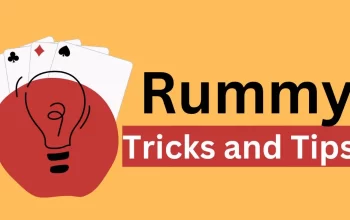Knowing poker tells is important for players. It is hard to learn all of them, however. For example, a player’s hands might shake when they are about to place chips into the pot. This is usually a sign of a strong hand.
However, the reliability of this poker tell varies from player to player. It is only one of many tells that can be used to determine a player’s hand strength.
Unconscious Tells
Unconscious tells are those that a player exhibits without even realizing it. For example, when a player glances at his starting hand quickly and then looks away it could indicate that they are holding a strong hand. This is because players who have a strong hand are less likely to give their opponents any reason not to call their bet.
Another unconscious tell is when a player tuts or sighs while looking at his cards. This indicates that the player is attempting to release tension. However, this tell is not as reliable as some of the others on this list and should be taken in context with other tells.
Other unconscious tells include a player’s body posture and how they place their chips. A player who stands upright and sits still is probably holding a strong hand while a player who is nervous or shaky might be bluffing. This is also true for a player who freezes when he makes a bet as this is usually a sign of weakness.
Behavioral Tells
Behavioral tells are more subtle cues players give off that can indicate their hand strength or intentions. These include body movements like tutting or sighing subconsciously, and even verbal cues such as a smile that might reveal weakness or an attempt to hide a smile that suggests strength.
The time it takes for a player to check can also be a tell that indicates their hand strength. Players who take more time usually have weak hands while players who call quickly typically have medium-strength hands or are bluffing.
Other behavioral poker tells can be as simple as the way a player arranges their chips on the table. Often times, players with strong hands will keep their chips neatly stacked up while those with weak hands will spread their chips out. The reliability of poker tells varies from player to player and they should be used as a general guide only. The more experienced a player is, the less likely they are to give off these types of tells.
Physical Tells
In addition to behavioral tells, poker players give off many physical cues. Some are more reliable than others, but most are easy to spot if you know what to look for. These tells can be verbal or non-verbal and occur consciously or subconsciously in live and online poker games.
For example, if a player starts to reach for chips to bet and then stops or freezes it’s likely they have a weak hand. If they make a large bet and then start to talk or gesture it’s probably a bluff.
Other tells include eye contact and the way a player holds their hands, especially if they are shaking or trembling. Observing how much they spread their chips around the table and how tightly they hold their card protector is another reliable tell. In addition, if their voice is high pitched or incoherent it’s often an indication that they are lying. A fluttering of the nose or eyes is also a sign of weakness.
Verbal Tells
For example, if a player double-checks their hole cards as they talk to you it could convey weakness and uncertainty, so bluffers might be reluctant to do it. That doesn’t mean it cannot be a tell, but it means that you need to weigh up multiple factors in the context of the situation to determine how reliable the tell is.
Another example is a player’s body language around bet-timing. Players who call quickly tend to have weak hands, while those who linger and consider betting often have strong ones.
Of course, top poker players are skilled at disguising their tells, and learning to spot them takes time. Nevertheless, some tells are universal and reliable. For example, if a player buys into the pot for less than 100% of their bankroll in a cash game it is usually a sign that they are not strong. In contrast, if a player calls the river with an almost full stack it is a strong indication that they have a good hand.





